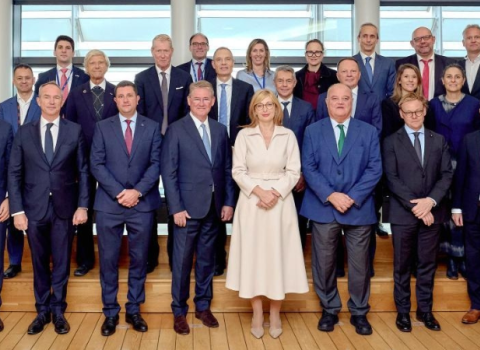The recent ruling by the Court of Justice of the European Union that DNA patents are not infringed if the DNA in question is not functional, may make it harder for companies to enforce such patents
IP|Business is supported by Foley & Lardner LLP
In patent law, the name of the game is usually the claim, but perhaps not so in Europe. The Court of Justice of the European Union recently inserted into their playbook a new rule defining when a “DNA patent” can be infringed.
Now, after the case of Monsanto Technology LLC v. Cefetra BV et al.1, a patent with claims covering isolated DNA or transgenic products that contain the patented DNA, may not necessarily be infringed if the DNA is not functional at the time of the alleged infringement. Patent owners who play in European fields may now find it difficult to enforce their otherwise valid DNA patents against acts of infringement, if they cannot prove the patented DNA was working at the time the infringement took place. And from the perspective of a company who in good faith wants to make, use, sell, or import a DNA-containing product in Europe, business decisions may now be laced with nagging uncertainty about whether an infringement lawsuit turns on the timing of their business activities.
In football (“soccer” in the U.S.), goal posts are usually 8 feet tall and placed 24 feet apart. The Court of Justice’s decision hasn’t so much shifted the goal posts, as it has perhaps reduced their dimensions depending on the time of day the game is played. In short, some may argue that patent enforceability in Europe may now expand and contract according to the timing of an infringing act. If so, this would beg the question: will competitors simply wait on the sidelines until the patentee’s patented DNA is in a less obvious “functional” form, to walk onto the field and avoid infringement?
The judgment in question concerns Monsanto Technology’s attempt to sue European importers of soybean meal made soybeans from genetically engineered plants grown in Argentina, on the grounds that importation was an act that infringed Monsanto’s corresponding European patent. The plants had been engineered to express the herbicide resistance gene 5-enolpyruvylshikimate-3-phosphate synthase, patented in Europe by Monsanto but not in Argentina. That patented gene may have been detectable in the imported soybean meal.
In this regard, the patent in question, EP 0 546 090, gave Monsanto proprietary exclusivity over (1) isolated DNA encoding the herbicide resistance gene, (2) a method of producing a genetically transformed plant which tolerates the herbicide glyphosate by making a transgenic plant cell containing the gene, (3) glyphosate-tolerant plant cells and plants, and (4) a method of controlling weeds by applying glyphosate (Monsanto sells Roundup® - the glyphosate herbicide) to a crop and weeds in a field containing a crop transformed with the gene and is therefore glyphosate-tolerant. But the patent did not expressly contain claims directed to a method of making soybean meal from glyphosate-tolerant plants.
After Monsanto sued European importers in Spain, the UK, and Denmark, it was the corresponding Dutch lawsuit that got the European Court of Justice to open its rulebook. Monsanto sued Cefetra et al. and Alfred C. Toepfer International GmbH (ACTI) for patent infringement in the Rechtbank in The Hague. The Dutch court held that soybean meal containing the patented gene did not infringe patent claims directed to “isolated” DNA. But it sought advice from the Court of Justice about whether a certain provision – Article 9 of biological Directive 98/44 – applied.
The Court responded that “a patent relating to a DNA sequence is limited to situations in which the genetic information is currently performing the functions described in the patent. That holds true both as regards the protection of the genetic information as such and as regards the protection of the materials in which that genetic information is contained.” This judicially-imposed functionality requirement was also held to apply to patent infringement claims in all European Union Member States.
The Court of Justice’s judgment is somewhat surprising because Article 9 was meant to define the boundaries of what constitutes patentable subject matter in the context of living and replicating organisms. Because such regulatory and non-gene DNA elements may be suitable for patenting, the drafters of Article 9 used the phrase “performs its function” to more broadly encompass gene expression control technology in the context of patentability enquiries at the Patent Office level. Thus, Article 9 was not intended to define the scope of enforceable rights in the context of alleged patent infringement. In the context of patent infringement, so long as the patented genetic information is present in the commercial product, and unless a functional limitation is written into the patent claim, the activity and function of the patented DNA at the time of commercialization should be immaterial.
The obvious scientific problem is that many genes are only expressed for a limited time period or in specific tissues in a living organism, or in response to specific environments. The counter-intuitive result of the Monsanto case is that the vehicle in which the patented gene or DNA resides is not an infringing product even though it houses the patented material. The less obvious legal problem is whether enforcing European patents on DNA has become more difficult. If the Court’s ruling is believed to unduly undermine patent enforcement in the biotechnology arena, it could contravene one or more provisions of the international community’s Trade-Related Aspects of Intellectual Property principles. For instance, Article 27 of TRIPS makes it a violation to discriminate against patent rights in a particular field of technology, that is, biotechnology or agrigenetics.
Biotechnology companies should now carefully review their options and intellectual property protection strategies, such as obtaining Plant Breeder’s Rights, which also protect harvested material and products made from harvested material. Soybeans and soybean meal would have fallen within the protection provided by certain articles under Plant Breeder’s Rights, for instance, and could have helped Monsanto obtain infringement damages.
Patents on methods of making a product, for example, a method of making soybean meal comprising the steps of harvesting seed from a genetically-engineered plant, extracting oil from the seed, and recovering the soybean meal, could have also proven very useful in Monsanto’s case. Furthermore, special attention should be given to how the function(s) of any claimed DNAs are described in a patent application to increase the likelihood of enforcement. Patents that claim the product’s unique characteristics and traits will also be important.
It must be stressed that the functionality requirement is not confined to the agricultural industry. Biotech, synthetic biology, medicine, and diagnostic industries, among others, will be affected too. The enforceability of patent claims directed to isolated nucleotides used as reagents, such as in diagnostic methods, forensics, and genome mapping and sequencing, are also put at significant risk. It could be argued that none of these DNAs “perform” their “function” in off-the-shelf vials or kits. Thus, patents covering these patented components may not be enforceable against others who are selling the same vials and kits, in view of the Court’s judgment. Proving the functionality of DNA in an accused product may now become of paramount concern to all patentees.
Investment and business growth, especially in the radically advancing forum of biotechnology, require confidence and faith in the legal system. Unfair games lead to unjust results, as well as to dispute and non-participation. Some may believe that the result in Monsanto vs. Cefetra may be unfair to patent owners who have invested time and money to obtain valid DNA patents in Member States that could now be difficult to enforce.
If that belief becomes a pervasive one during future DNA patent enforcement disputes, then this case may have unwittingly encouraged hesitancy among the diverse business communities who seek protection and guidance from Europe’s otherwise historic patent system.
Vid Mohan-Ram is an associate, and Richard Peet is a partner with Foley & Lardner LLP
Footnotes
 1. Judgment of the Court (Grand Chamber), C-428/08, 6 July 2010. [^]
1. Judgment of the Court (Grand Chamber), C-428/08, 6 July 2010. [^]
2. Article 9 of Directive 98/44/EC provides that “[t]he protection conferred by a patent on a product contain or consisting of genetic information shall extend to all material, save as provided in Article 5(1),in which the product is incorporated and in which the genetic is contained and performs its function.” Article 5(1) states that “[t]he human body, at various stages of its formation and development, and the simple discovery of one of its elements, including the sequence or partial sequence of a gene, cannot constitute patentable inventions. However, Article 5(2) provides that ‘[a]n element isolated from the human body or otherwise produced by means of a technical process, including the sequence or partial sequence of a gene, may constitute a patentable invention, even if the structure of that element is identical to that of a natural element.” [^]
3. Article 27 of the TRIPS Agreement provides “Patentable Subjection Matter: (1) Subject to the provisions of paragraphs 2 and 3, patents shall be available for any inventions, whether products or processes, in all fields of technology, provided that they are new, involve an inventive step and are capable of industrial application. Subject to paragraph 4 of Article 65, paragraph 8 of Article 70 and paragraph 3 of this Article, patents shall be available and patent rights enjoyable without discrimination as to the place of invention, the field of technology and whether products are imported or locally produced. (2) Members may exclude from patentability inventions, the prevention within their territory of the commercial exploitation of which is necessary to protect ordre public or morality, including to protect human, animal or plant life or health or to avoid serious prejudice to the environment, provided that such exclusion is not made merely because the exploitation is prohibited by law. (3) Members may also exclude from patentability (a) diagnostic, therapeutic and surgical methods for the treatment of human or animals; (b) plants and animals other than micro-organisms, and essentially biological processes for the production of plants or animals other than non-biological and microbiological processes. However, Members shall provide for the protection of plant varieties either by patents or by an effective sui generis system or by any combination therefore. The provisions of this subparagraph shall be reviewed fours years after the date of entry into force of the WTO Agreement.” (emphasis added). [^]
4. Article 30 of the TRIPS Agreement provides “Exceptions to Rights Conferred Members: Members may provide limited exceptions to the exclusive rights conferred by a patent, provided that such exceptions do not unreasonably conflict with a normal exploitation of the patent and do not unreasonably prejudice the legitimate interests of the patent owner, taking account of the legitimate interests of third parties.” [^]





 A unique international forum for public research organisations and companies to connect their external engagement with strategic interests around their R&D system.
A unique international forum for public research organisations and companies to connect their external engagement with strategic interests around their R&D system.